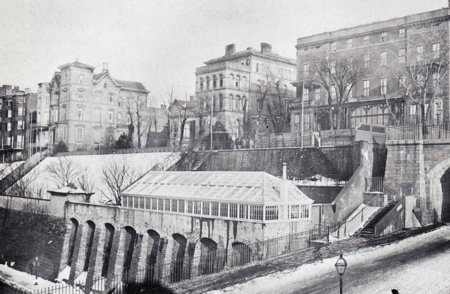
Brownstoner posted this photo today of a pre-BQE Promenade:
This photo from the turn of the century shows a much different promenade in Brooklyn Heights. Until they were demolished in 1946 to make way for the expressway, this arched viaduct, greenhouse and buttressed wall were accessible by the stone stairways that led down from the mansions above to the ferry landing below. The grand double-brownstone at right was designed by Richard Upjohn and completed in 1857 for the merchants A. A. Low (as in Low Library at Columbia) and A. M. White. To the left (at center in the photo) is the Henry Pierrepont mansion.


